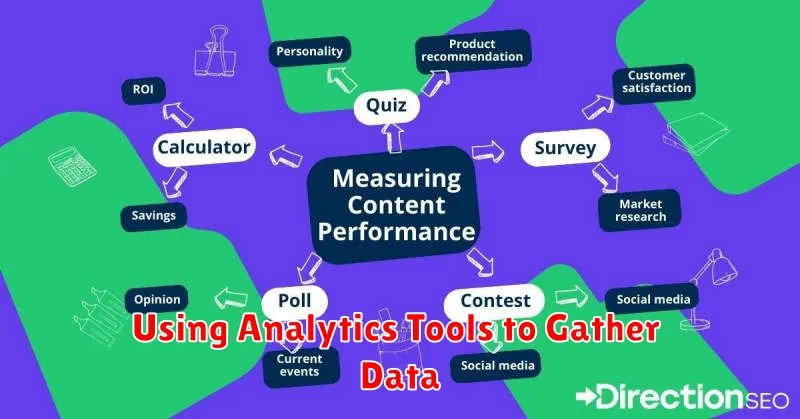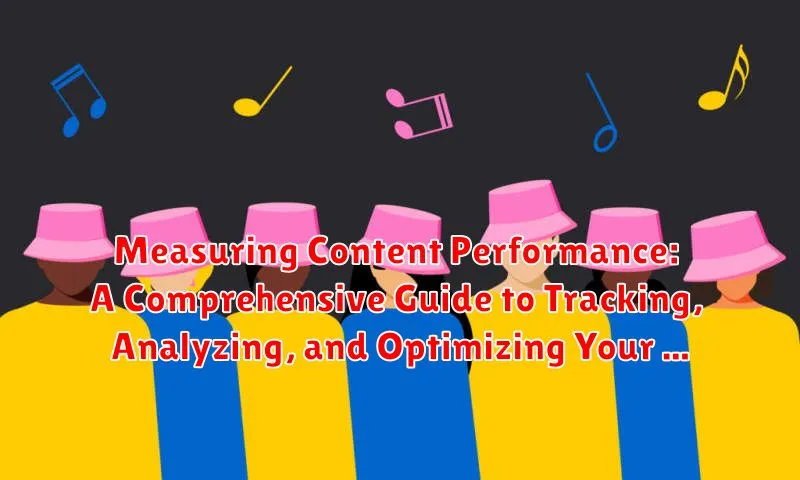In today’s digital landscape, content performance is paramount. Whether you’re a seasoned marketer or just beginning your content journey, understanding how to effectively measure, track, analyze, and optimize your content strategy is crucial for achieving your business objectives. This comprehensive guide provides a practical framework for evaluating your content’s effectiveness, identifying areas for improvement, and ultimately, maximizing your return on investment (ROI). From defining key performance indicators (KPIs) to leveraging analytics tools, we’ll explore the essential elements of a data-driven content strategy.
This guide delves into the intricacies of measuring content performance, offering actionable insights and best practices to refine your approach. We will explore various metrics, including website traffic, engagement rates, lead generation, and conversions. By understanding how to track and analyze these metrics, you can gain a deeper understanding of your audience’s behavior, identify content that resonates, and make informed decisions to optimize your strategy for future success. This in-depth exploration will equip you with the knowledge and tools necessary to transform your content from a simple asset into a powerful driver of growth.
Setting Clear Goals and Objectives
Before diving into metrics and data analysis, it’s essential to establish clear goals and objectives for your content strategy. Without defined aims, measuring performance becomes an exercise in futility. Ask yourself what you want to achieve with your content.
Are you aiming to increase brand awareness, generate leads, drive sales, or improve customer retention? Clearly defined goals provide a framework for selecting appropriate metrics and interpreting data effectively. For example, if your goal is to boost brand awareness, you might focus on metrics like reach and impressions. Conversely, lead generation goals might prioritize metrics such as conversion rates and lead quality.
Specificity is key. Instead of a vague goal like “improve website traffic,” aim for something quantifiable, such as “increase organic traffic by 20% in the next quarter.” This precision allows you to accurately measure progress and determine the effectiveness of your content strategy. Measurable goals provide a benchmark against which to assess performance and demonstrate the value of your content marketing efforts.
Choosing the Right Metrics for Your Goals
Selecting appropriate metrics is crucial for accurately measuring content performance. Different goals necessitate different metrics. Aligning your metrics with your objectives ensures you’re tracking the right data to inform your strategy.
If your goal is brand awareness, focus on metrics like reach, impressions, and social shares. These indicators demonstrate how far your content is spreading and its visibility.
For lead generation, prioritize metrics such as form submissions, email sign-ups, and content downloads. These reflect audience engagement and interest in your offerings.
If your objective is driving sales, track conversion rates, revenue generated, and customer lifetime value. These demonstrate the direct impact of your content on business outcomes.
Tracking Website Traffic and Engagement
Tracking website traffic and engagement provides crucial insights into how your content is performing and resonating with your audience. Website traffic metrics reveal the volume and sources of your audience, while engagement metrics demonstrate how users interact with your content.
Key traffic metrics include:
- Unique Visitors: The number of individual users visiting your website.
- Pageviews: The total number of pages viewed on your site.
- Traffic Sources: Identifying where your traffic originates from (e.g., search engines, social media, referrals).
Engagement metrics offer a deeper understanding of user behavior. These include:
- Bounce Rate: The percentage of visitors who leave after viewing only one page.
- Time on Page: The average duration users spend on a specific page.
- Pages per Session: The average number of pages viewed per visit.
- Scroll Depth: How far down a page users scroll, indicating how much content they consume.
Analyzing Social Media Performance

Social media analytics provide crucial insights into how your content resonates with your target audience. Analyzing this data reveals which platforms are most effective, what type of content performs best, and how your audience interacts with your brand.
Key metrics to track include reach (how many users saw your content), engagement (likes, comments, shares), and follower growth. These metrics help gauge the effectiveness of your social media strategy in building brand awareness and fostering a community.
Pay close attention to sentiment analysis. Understanding how your audience feels about your brand and content allows for adjustments to messaging and improves future campaigns. Tools often categorize sentiment as positive, negative, or neutral.
Finally, track website clicks originating from social media. This helps understand how effectively your social media efforts are driving traffic to your website and contributing to conversions.
Monitoring Conversions and ROI
Conversion tracking is crucial for understanding how effectively your content drives desired actions. A conversion can be any action valuable to your business, such as a purchase, form submission, newsletter signup, or download. Define which conversions align with your content goals.
Tracking these conversions allows you to tie your content directly to measurable results. Assign monetary values to each conversion type to calculate ROI. This might involve estimating the average value of a lead or the profit margin on a product sale.
By analyzing conversion data, you can identify which content pieces contribute the most to your bottom line. This allows you to prioritize content creation around high-performing topics and formats, optimizing your content strategy for maximum ROI.
Regularly monitor your key conversion metrics and ROI to understand trends and make necessary adjustments to your content strategy. This data-driven approach ensures you’re focusing your efforts on content that delivers tangible business value.
Using Analytics Tools to Gather Data

Effective content measurement relies heavily on utilizing the right analytics tools. These tools provide the raw data necessary for understanding content performance and informing optimization strategies. Selecting the appropriate tools depends on the specific goals and platforms relevant to your content strategy.
Google Analytics remains a staple for tracking website traffic and user behavior. It offers insights into page views, bounce rates, time on page, and user demographics. For social media performance, platform-specific analytics dashboards are invaluable. Facebook Insights, Twitter Analytics, and Instagram Insights, for example, provide metrics on engagement, reach, and audience demographics. These platforms often offer detailed breakdowns of individual post performance.
Specialized tools like SEMrush and Ahrefs can analyze backlink profiles, keyword rankings, and competitor performance, providing a broader context for content effectiveness within the competitive landscape.
Interpreting Data and Making Informed Decisions
Data collection is only the first step. The true value lies in interpreting that data to make informed decisions that improve content performance. This involves identifying trends, patterns, and correlations within your data set.
Look for significant changes in key metrics. For example, a sudden drop in organic traffic might indicate a technical SEO issue or a change in search algorithm. A spike in social shares could suggest a piece of content resonated particularly well with your audience.
Context is crucial. Don’t just look at numbers in isolation. Consider external factors that might be influencing your data, such as seasonality, industry trends, or current events. By analyzing your data within the proper context, you can draw more accurate conclusions and make more effective decisions.
Finally, be prepared to iterate and adapt. Data analysis is an ongoing process. As you gather more information and learn more about your audience, you should continuously refine your content strategy based on your findings.
A/B Testing and Optimizing Content
A/B testing, also known as split testing, is a crucial method for optimizing content performance. It involves comparing two versions of a piece of content (A and B) to determine which performs better based on a specific metric. This allows for data-driven decisions about content changes.
The process begins by identifying an element to test, such as a headline, call to action, or image. Version A represents the original content, while Version B incorporates a modification. Traffic is then split between the two versions, and their performance is tracked.
Analyzing the results reveals which version achieved the desired outcome more effectively. The winning version is then implemented, replacing the original. Continuous A/B testing allows for iterative improvements and optimization towards peak performance.

